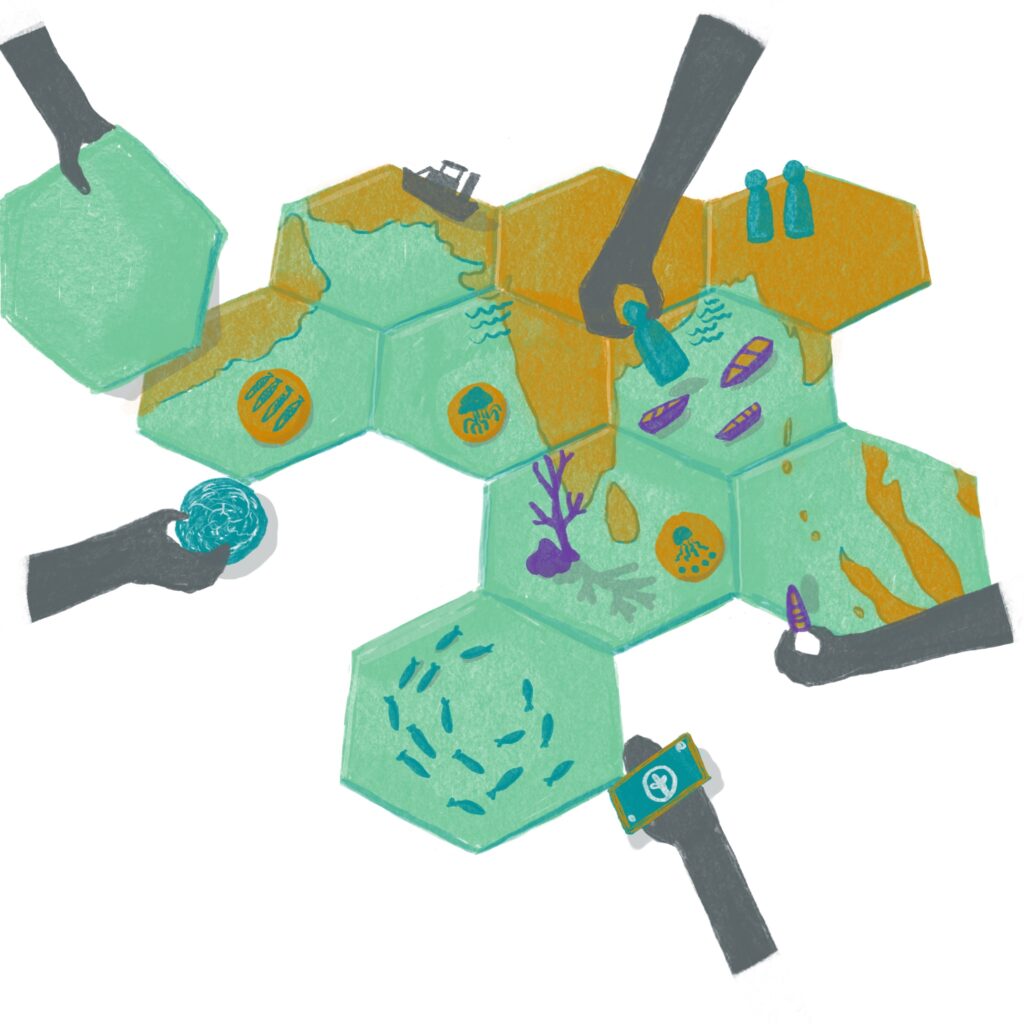The fastest land animal in the world can sprint up to 70 mph, but cannot outrun its own extinction. One hundred years ago there were around 100,000 cheetahs (Acinonyx jubatus) roaming across the African plains and even parts of Asia. Now there are estimated to be only 6000–8000 individuals left on the entire planet. With over 90% of the species’ historical population gone in a century, cheetah conservationists are concerned that we could lose the species, both in the wild and in captivity, in a matter of decades. Thankfully, man’s best friend is helping to protect this fast cat species.
A different kind of cat
Compared to the other 40 species of cats in the world, the cheetah differs notably from its feline friends—so much that the cheetah was once thought to be more closely related to dogs. These fast felids have a unique claw structure as their claws are semi-retractable, giving their tracks the appearance of a canid’s. Despite this morphological characteristic, the cheetah is a cat through and through and has this special adaptation (along with many others) to allow it to do what it does best—run.
In addition to top speeds of 60–70 mph, cheetahs also have an acceleration rate of 0–60 mph in 3.4 seconds. They have a long, flexible spine in order to reach great stride lengths of 20–25 feet; a large heart, lungs, adrenal glands, and nasal cavity to process oxygen quickly; and a small head and ears to reduce drag while chasing prey.
While all of these adaptations allow the cheetah to be quick, there is a trade-off. Many of these adaptations facilitate speed at the cost of more traditional predatory adaptations. For instance, sharp semi-retractable claws help a cheetah gain traction while running, but the constant contact during movement blunts the claws. The cheetah’s small head and large nasal cavity, located above the canine teeth, allow for maximum aerodynamic movement, but limit its jaw strength and canine teeth growth.
In order to be aerodynamic, cheetahs have leaner muscles and are small relative to their cousins in the Panthera family. Females weigh 60–85 pounds and males 80–110, compared to leopards (the next largest African cat), where females and males weigh 65–135 and 85–175 pounds, respectively.
Scaredy cat of the savannah
These characteristics mean that the cheetah is not well-equipped to stand up to other African predators such as lions, leopards, and hyenas. This leaves them at a disadvantage in arguments that erupt over territory or prey.
Fortunately for the survival of the species, this lightweight cat has developed a behavioural adaptation to compensate for its physical disadvantage—cheetahs are skittish. This animal has evolved to understand that it cannot win in a fight with other predators, but it can win the footrace. Coupled with sharp daytime vision, thanks to their elongated eyes, cheetahs are able to scan the horizon and see threats coming up to three miles away, before making a quick dash.
Cheetahs are often victims of kleptoparasitism, with other predators, such as hyenas and lions, stealing their prey. Cheetahs are so skittish that they have even been observed being driven away from their kills by baboons and vultures. Fear of competition often leads to cheetahs lowering their predation rate in areas where lions and hyenas are present. And as opposed to most other cat species, they are diurnal hunters, in order to avoid competition from other large predators that hunt at night.

The problem
Pastoralism is critical to the livelihood and culture of many people in sub-Saharan Africa. As human population increases and more permanent farms replace traditional migratory pastoral practices, predators and humans are more frequently coming into conflict. Too often, the simple solution for farmers is to shoot predators on sight, to alleviate the threat posed to their livestock and livelihood.
Cheetahs, like many carnivores throughout history, are considered to be a threat to local livestock—predominantly small sheep and goats, which comprise up to 6% of the cheetah’s diet. However, they are disproportionately persecuted because of their high visibility during the day.
Imagine waking up to find that your livelihood and food source have been taken away from you. You instinctively rise in anger and try to prevent this from happening again. You set out to find the culprit and find the cheetah more often than other predators, due to its diurnal behaviour.
This association has helped label the cheetah as a pest to locals. This conflict now commonly occurs all over the globe, in areas where humans are starting to move into traditional carnivore territory. Wolves were exterminated in many parts of the United States, due to persecution from ranchers, who were threatened by the presence of a carnivore near their livestock. The same is happening now with cheetahs throughout Africa.
Can a big dog be the answer for these big cats?
Thankfully, a group of conservationists, including Dr. Laurie Marker and Rebecca Klein, came up with a solution—large guard dogs for the local farms. Livestock guardian dogs or LGDs have been used throughout the world to help mitigate conflict between ranchers and carnivores, and protect herds from predation.
The idea is simple, but it makes sense. Puppies (traditionally Anatolian Shepherds, but some programs also use local Twasa dogs) are introduced to livestock as young pups, to allow them to imprint on the herd and instinctively protect them from predators.
Because cheetahs are skittish predators that instinctively avoid conflict, the goal of the LGD is to scare away cheetahs by barking. If cheetahs are avoiding flocks, then any losses are caused by another predator, showing farmers that cheetahs are innocent.
At first, the idea was slow to catch on. Local farmers did not want to have another mouth to feed, and they worried that the guardian dogs would potentially go after their flock.
However, a small group of farmers in Namibia decided to take a chance, once it became known that the LGD’s food, medical expenses, and training were taken care of by the conservation program giving them the puppy. After that, the idea took off. Witnessing their success at keeping flocks safe not only from cheetahs, but other predators as well, more locals wanted their own dog.
Community conservation is key to the cheetah’s ability to survive. Cheetahs occur in low densities and prefer to be one of the only cat species around, to reduce the probability of kleptoparasitism. This means that a vast majority, around 90% of the wild population lives outside of protected areas, where other predator populations thrive.
The use of LGDs for livestock protection and cheetah conservation has increased in popularity, and is now being employed by multiple organizations throughout Africa, such as the Cheetah Conservation Fund in Namibia, Cheetah Conservation in Botswana, and Action for Cheetahs in Kenya.
All organizations specially tailor their program to reflect the culture and needs of locals, and work to change the perception of cheetahs through the local individuals’ own personal experiences.
Overall, livestock guardian programs tend to be one of the most successful and most beneficial forms of mitigating human-cheetah conflict. Participating pastoralists in various locations have seen a decrease in incidents, if not an elimination of livestock predation, after receiving and training an LGD.
Further, these programs are so effective that cheetah populations are stabilizing, and in some areas are increasing, where these LGD programs are in place. This gives conservationists hope that, with the help of dogs, the world’s fastest cat might just win the race against extinction.
Further Reading
Braun, E. (1994). Helping the cheetah cheat extinction. Animals , 127 (5), 36.
Dickman, A. J., Macdonald, E. A., & Macdonald, D. W. (2011). A review of financial instruments to pay for predator conservation and encourage human–carnivore coexistence. Proceedings of the National Academy of Sciences, 201012972.
Marker, L. L., Dickman, A. J., & Macdonald, D. W. (2005). Perceived effectiveness of livestock-guarding dogs placed on Namibian farms. Rangeland Ecology & Management , 58 (4), 329-336.
Potgieter, G., Kerley, G., & Marker, L. (2016). More bark than bite? The role of livestock guarding dogs in predator control on Namibian farmlands. Oryx, 50 (3), 514-522.






